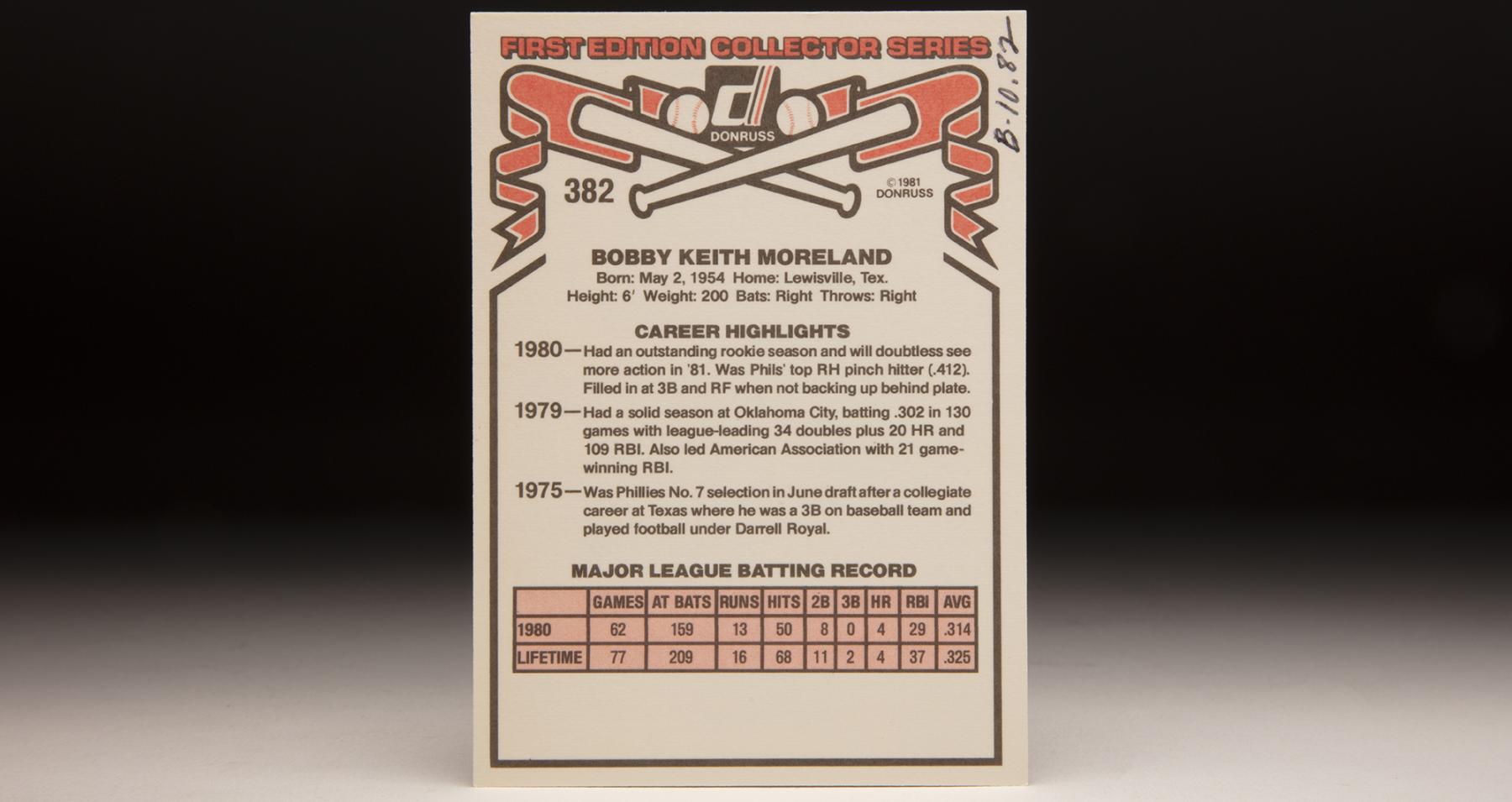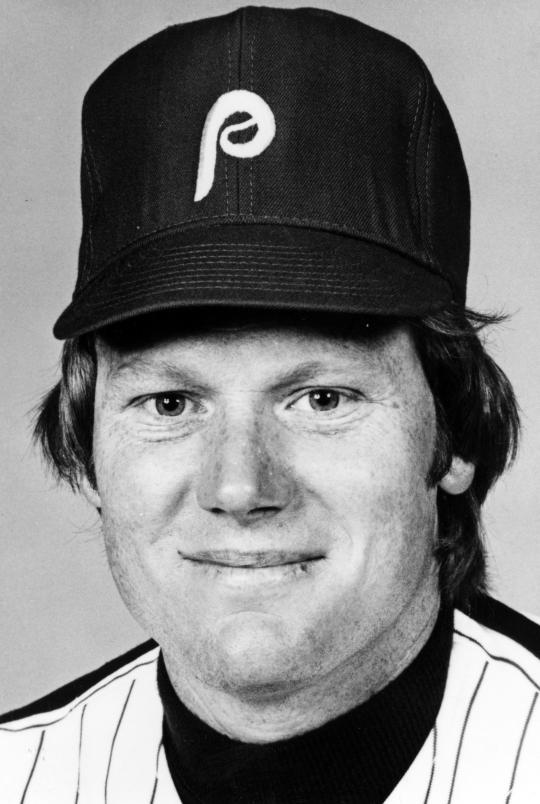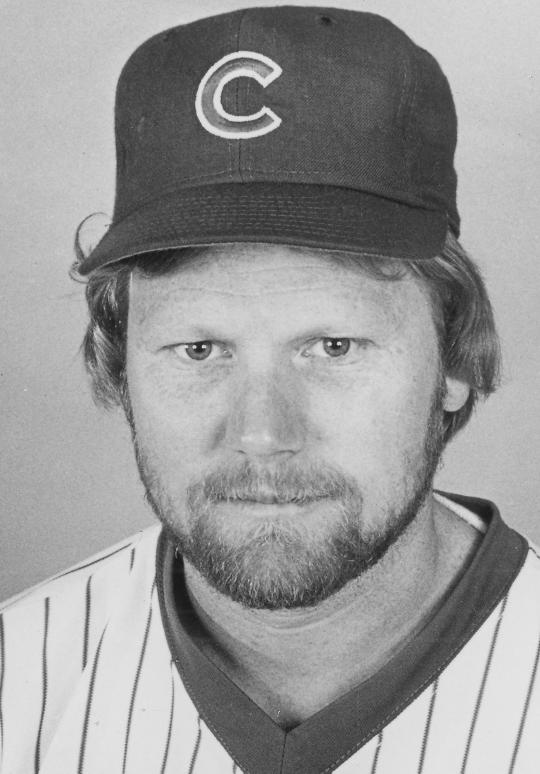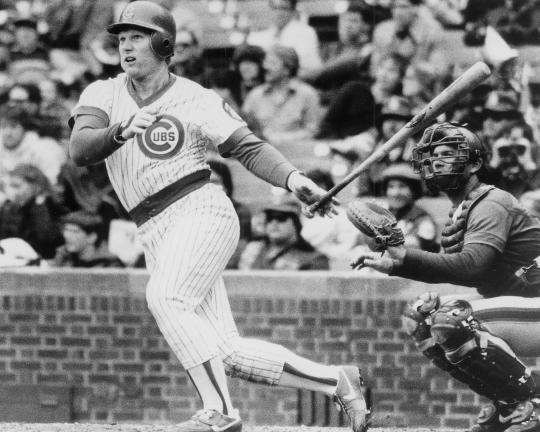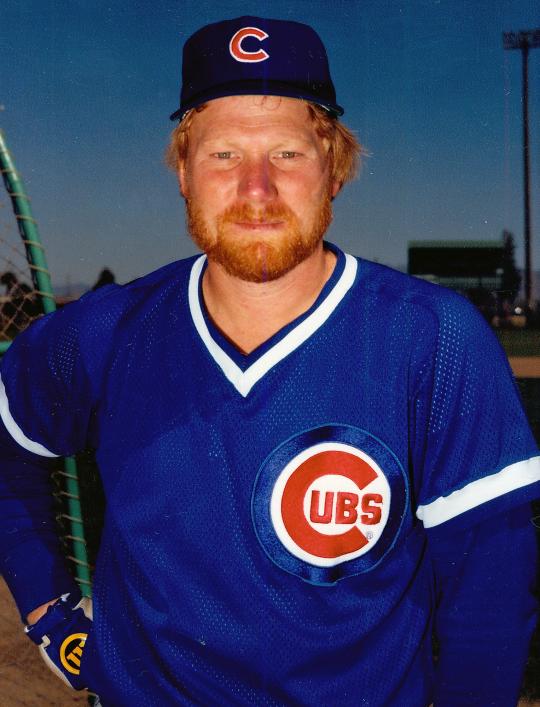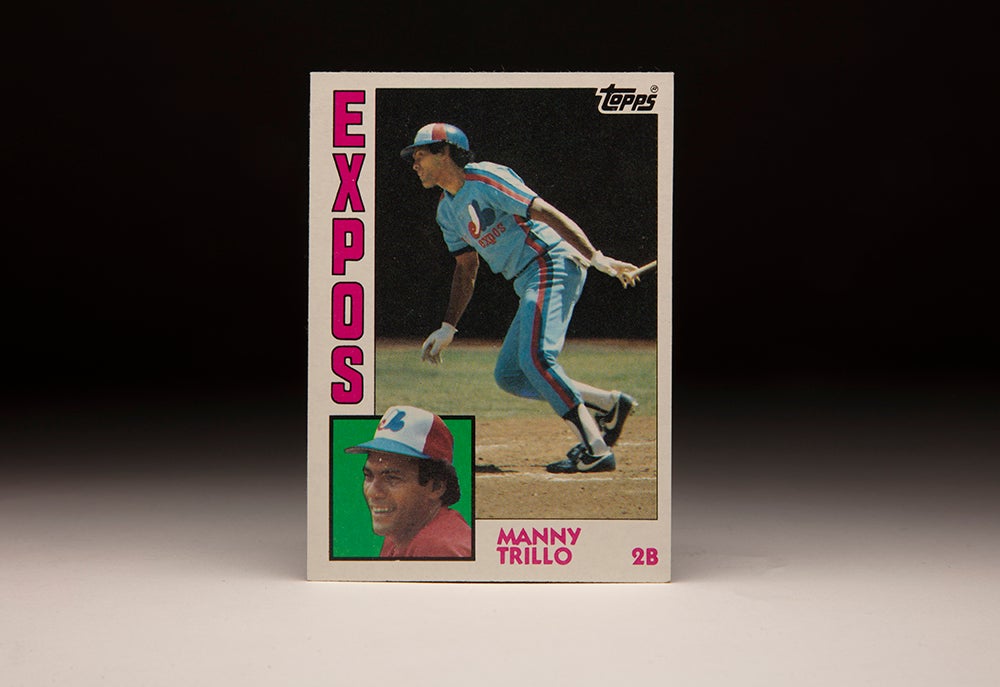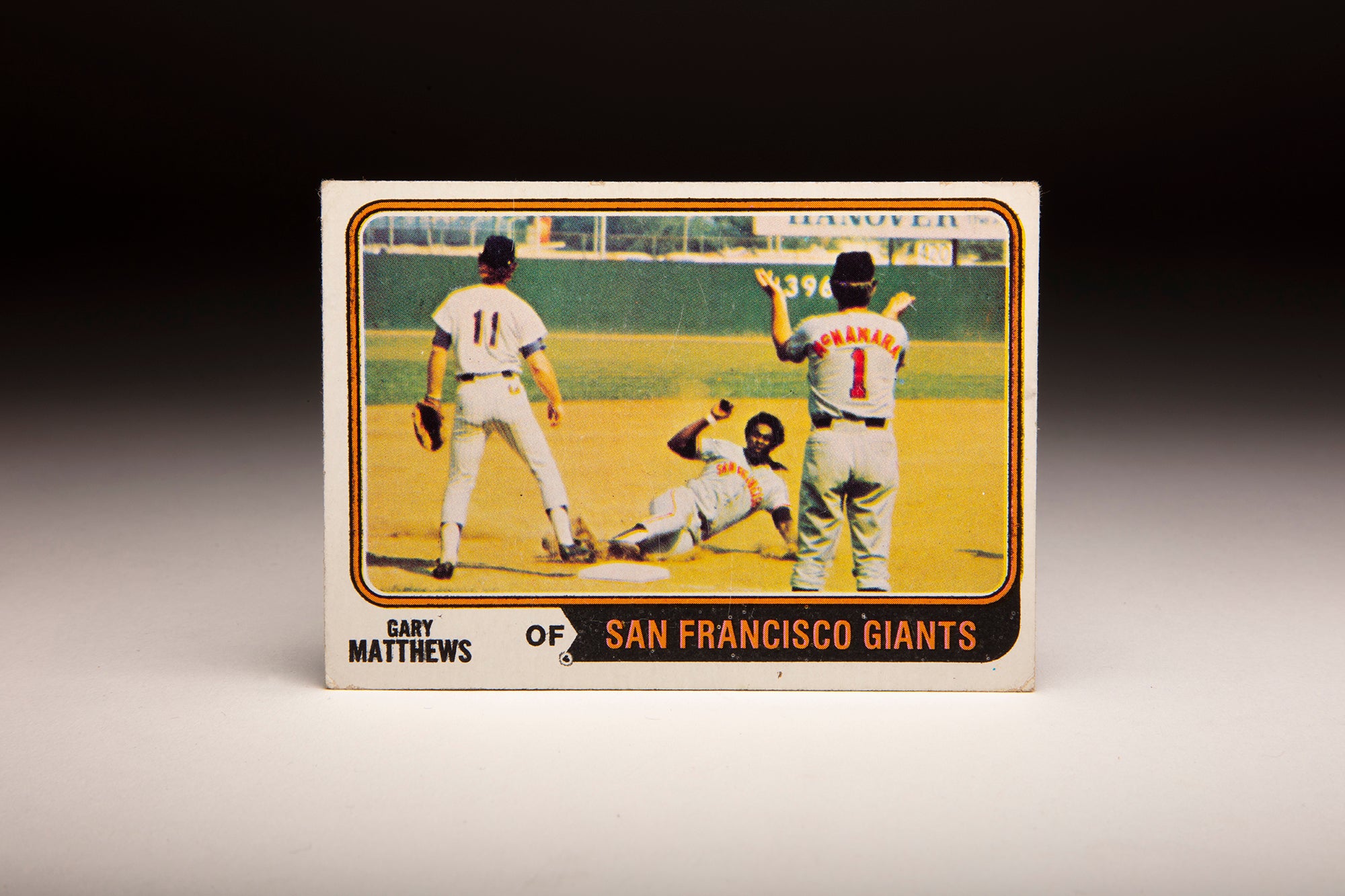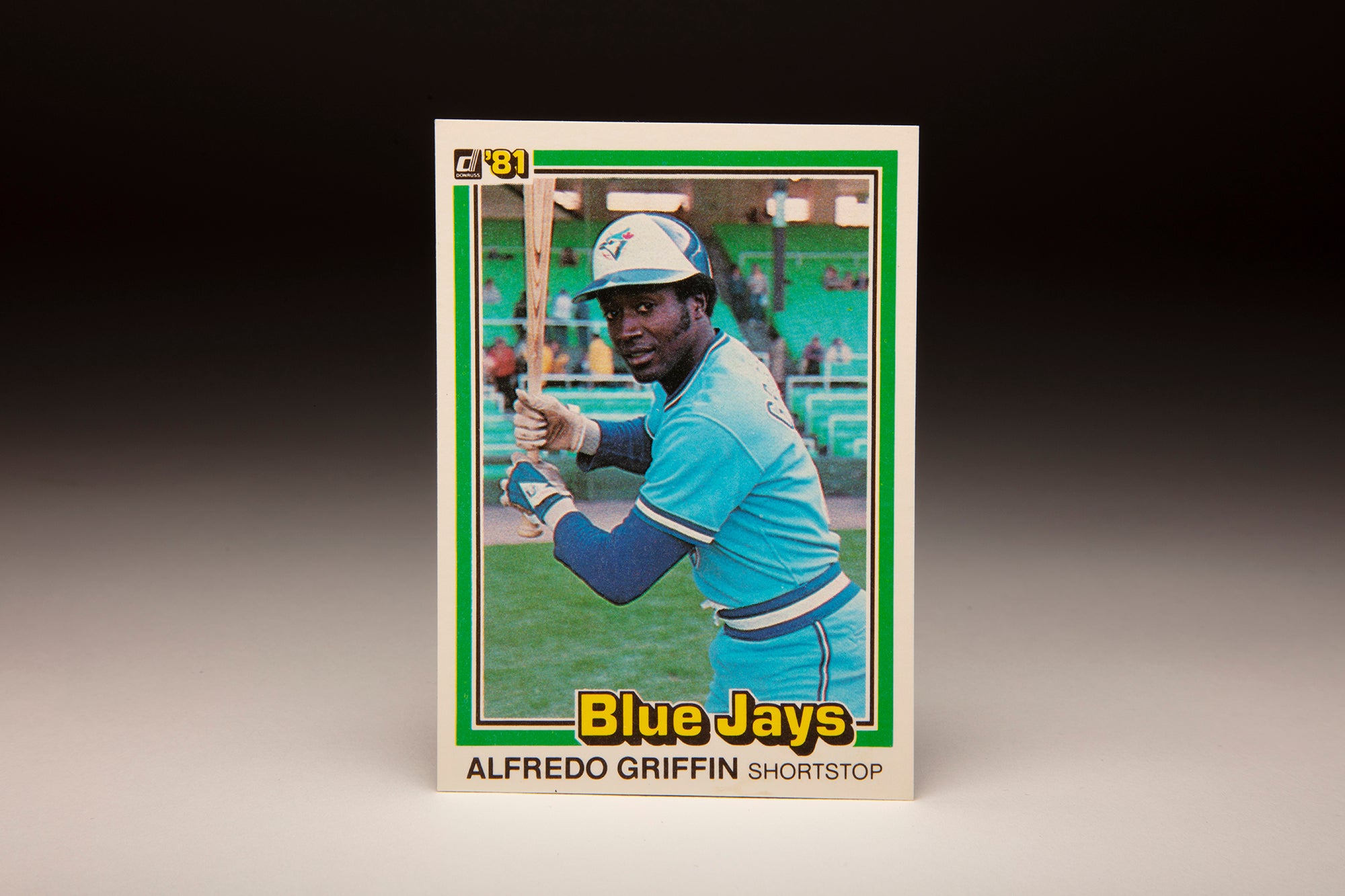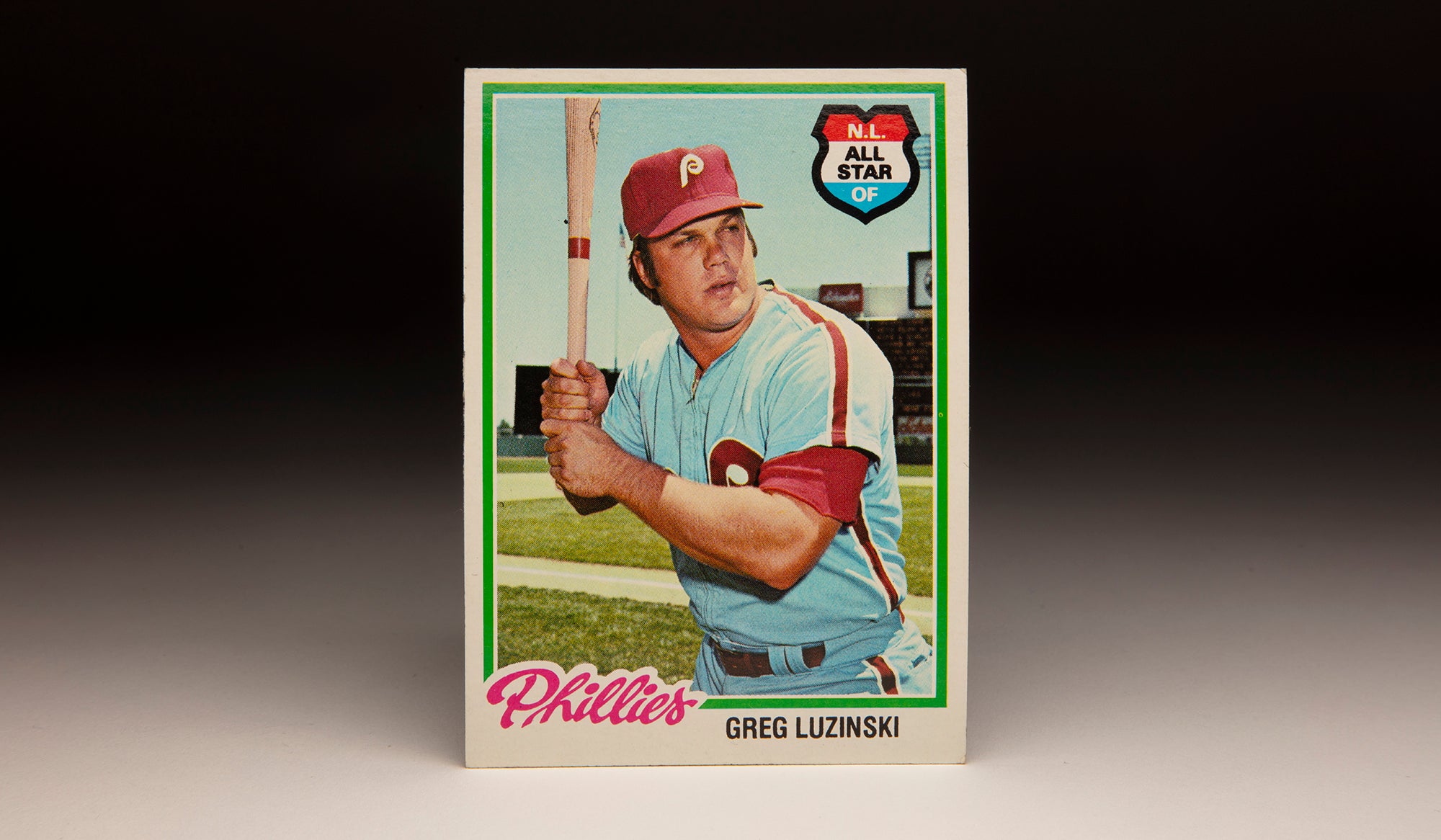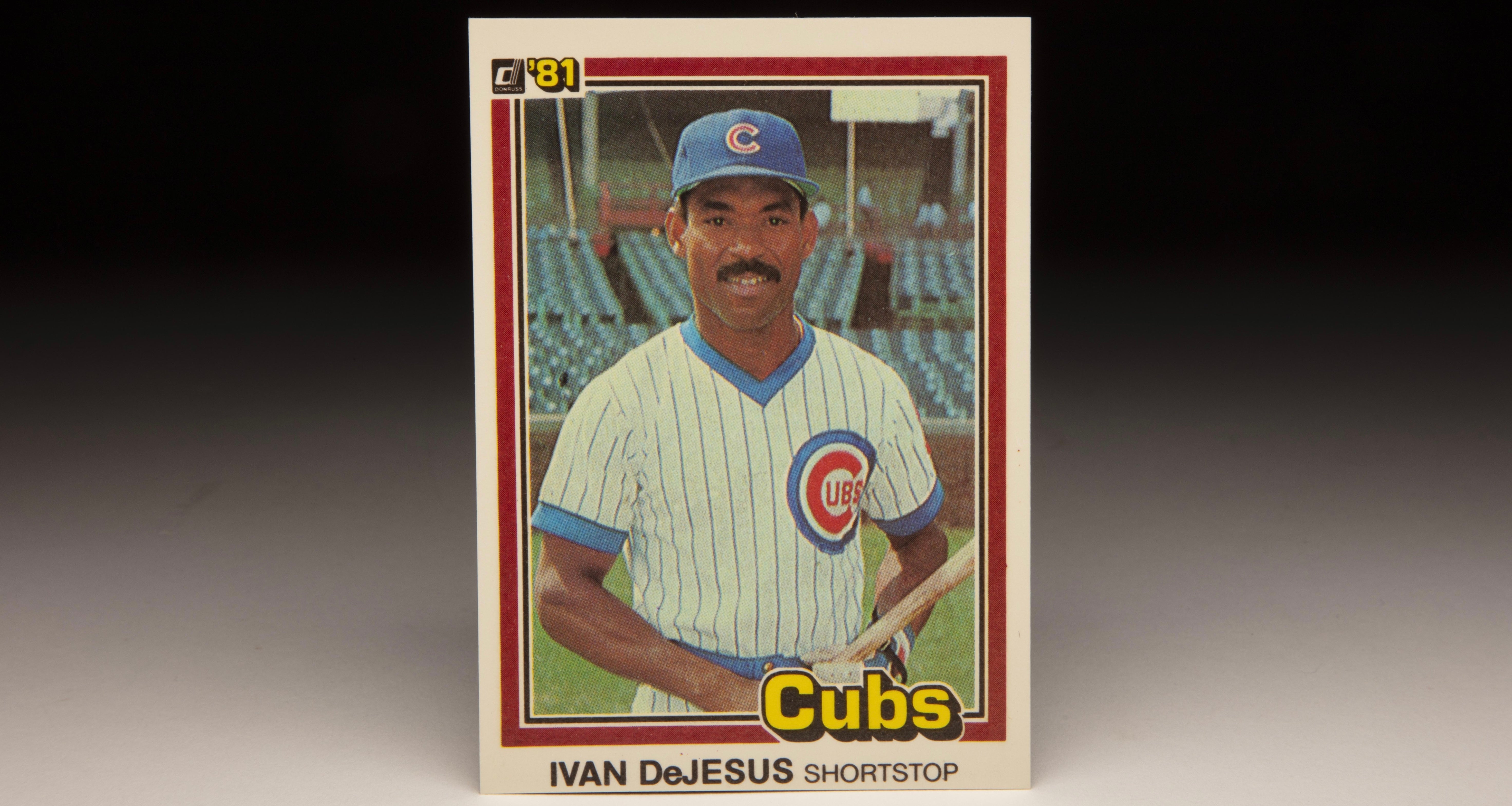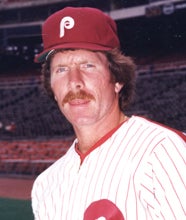- Home
- Our Stories
- #CardCorner: 1981 Donruss Keith Moreland
#CardCorner: 1981 Donruss Keith Moreland
Down by two runs in the bottom of the eighth of Game 4 of the 1984 National League Championship Series, the Chicago Cubs had only five outs to work with and faced future Hall of Famer Goose Gossage on the mound.
Up stepped Keith Moreland, the Cubs right fielder and cleanup hitter who had a reputation as one of the best fastball hitters in the game. On a 1-and-1 pitch, Moreland singled to left – scoring Ryne Sandberg and cutting the Padres lead to 5-4. And after Henry Cotto pinch ran for Moreland, Jody Davis doubled home Cotto to tie the game at five – seemingly setting the stage for the first Cubs’ World Series trip in 39 seasons.
Steve Garvey’s home run in the ninth inning ended the Cubs’ hopes in Game 4, and the Padres went on to win Game 5 and advance to the Fall Classic. But Moreland’s heroics would add to a stellar postseason resume for one of the most consistent hitters of the era.
Hall of Fame Membership
There is no simpler, and more essential, way to demonstrate your support than to sign on as a Museum Member.
Born Bobby Keith Moreland on May 2, 1954, in Dallas, the future big leaguer grew up in football country. Moreland graduated from R.L. Turner High School in Carrollton, Texas, in 1972 and enrolled at the University of Texas, where he played both football and baseball.
In the fall of 1972, Moreland – a defensive back – set a new Texas record for freshmen with seven interceptions.
“Keith Moreland is the guy who is really coming around defensively,” Texas coach Darrell Royal told the Associated Press after the team’s final two-a-day workout in September of 1973. “He’s jumped into prominence more than anyone else this fall.”
In the spring of 1973, Moreland won All-American honors as a third baseman for the Longhorns and was named the Southwest Conference Player of the Year by the Associated Press.
“I’ve always wanted to play football for Texas,” said Moreland, who acknowledged that baseball was his preferred sport. “So I decided I’d better not pass up the opportunity.”
Moreland hit .405 as a freshman for the Longhorns and earned All-American honors each year from 1973-75, hitting .333 as a sophomore and then .410 in 1975 while co-captaining a Longhorns squad that went 59-6 and won the College World Series.
On the gridiron, Moreland earned a starting job in the 1973 season opener against Miami (Fla.) but was relegated to backup duty after that, appearing in all 11 of the Longhorns games that season. But he walked away from football after his sophomore season.
When the Phillies selected Moreland in the seventh round of the 1975 MLB Draft, Moreland left college and began his pro career. In his three seasons, Moreland had already surpassed Dave Chalk with the most base hits in Longhorns history.
“(Moreland is) as fine a hitter as has been around here in a long, long time,” Texas baseball coach Clint Gustafson told the Austin American-Statesman. “I’ll be surprised if Keith’s name in a major league box within two years.”
Moreland reported to Class A Spartanburg in the summer of 1975, where he hit .276 with 28 runs scored and 41 RBI in 69 games. Promoted to Class A Peninsula of the Carolina League in 1976, Moreland hit .282 in 78 games before moving on the Double-A Reading, where he batted .261 in 61 contests.
Though he hit only five home runs over his first 208 minor league games, Moreland was already developing a reputation as one of the game’s better prospects.
In 1977, the Phillies decided to take full advantage of Moreland’s powerful throwing arm and moved him behind the plate. He hit .327 with 19 doubles and 55 RBI in 104 games with Reading before earning a promotion to Triple-A Oklahoma City for the final few days of the campaign.
The Phillies placed Moreland on the 40-man roster following the season and invited him to their big league Spring Training camp.
“Keith hit real well last year,” Phillies minor league instructor Tom Harmon, a veteran MiLB catcher who was brought in to work with Moreland, told the American-Statesman. “He’s got a strong arm. And if you can catch and hit, nothing can stop you.”
But with veterans Bob Boone, Barry Foote and Tim McCarver already in the big leagues, the Phillies didn’t have room for Moreland behind the plate. Moreland’s bat, however, made him one of the game’s top prospects as he hit .289 with 16 homers and 98 RBI for Triple-A Oklahoma City in 1978 – with 109 of his 130 games coming as a catcher.
Moreland made his big league debut on the final day of the 1978 regular season – going 0-for-2 in relief of Foote a day after the Phillies had clinched the NL East title. It was the only game he appeared in for the Phillies that year but he spent the entire month of September with the big league team.
Moreland was sent back to Triple-A in 1979 and again put up huge numbers. In 130 games – again, mostly as a catcher – Moreland hit .302 with 20 homers and 109 RBI. Called up to the Phillies in September, Moreland saw more action this time as Philadelphia was out of the pennant race.
On Sept. 20, Moreland appeared to hit his first big league homer when he roped a ball off Pittsburgh’s Jim Rooker down the left field line at Veterans Stadium. Third base umpire Eric Gregg signaled for a home run, immediately causing most of the Pirates team to protest that the ball had been foul. A home run would have turned a 1-1 tie into a 4-1 Phillies lead, but home plate umpire Doug Harvey reversed the call – leading to the ejection of Philadelphia manager Dallas Green.
“It was foul by at least four feet,” said Pirates left fielder Lee Lacy, whose team was in a dogfight with the Expos for the NL East title. “(Gregg) made a mistake, but I was so sure the call would be changed that I never even got into the argument.”
Moreland’s first MLB homer would have to wait – but he did hit .375 over 14 games that September, posting a .521 slugging average thanks to three doubles and two triples.
At Spring Training in 1980, Moreland set a goal of making the Phillies as the No. 2 catcher behind Boone, who was a perennial All-Star.
“Before, I never really thought I had a chance to make the club,” Moreland told the Tampa Bay Times. “This year, I want to be ready early. I want to have a great spring. I want to make this club.”
After hitting .359 in Spring Training games, Moreland made the club as Boone’s backup. And as Boone struggled through a season where he hit .229, Moreland began to see more playing time.
“I’ve always said it’s going to take 25 guys to win this thing,” Green told the Lancaster (Pa.) New Era, “and the more we use guys early in the race the more we’re going to feel comfortable using them in the stretch. They’ll have played under pressure, and Keith Moreland is one of the guys I want to use because when September comes I want him ready.”
Moreland was hitting .347 as late as Aug. 29 before finishing with a .314 batting average, four homers and 29 RBI in 62 games. The Phillies won the NL East title and Moreland made his postseason debut in Game 3 of the NLCS vs. the Astros, entering the contest in the bottom of the 11th after Green pinch hit for Boone in the top of the inning. Houston won the game 1-0 on Denny Walling’s sacrifice fly in the 11th.
Then in the decisive Game 5, Moreland kept a Phillies rally going with a critical at-bat in the eighth inning. Entering the frame trailing 5-2 against Nolan Ryan, the Phillies strung together three singles and a walk to chase Ryan and bring on left-hander Joe Sambito to face lefty Bake McBride. Green countered with Moreland, who grounded to second – forcing out Pete Rose at second base but scoring Boone to cut Houston’s lead to 5-4.
Ramón Aviles then pinch ran for Moreland, and after Mike Schmidt struck out, Del Unser singled to score Greg Gross to tie the game at 5. Manny Trillo followed with a two-run triple to give Philadelphia a 7-5 lead, and the Phillies would win the game 8-7 to advance to the World Series.
In the Fall Classic, Moreland drew a start at designated hitter in Game 2 when Greg Luzinski came down with the stomach flu, and Moreland went 2-for-4, driving in the Phillies’ sixth-and-final run in the eighth inning with a single off Dan Quisenberry as Philadelphia won 6-4.
Moreland served as the Phillies’ DH in both Games 3 and 5, recording a hit in each game to help Philadelphia win its first World Series title.
“I go up, try to see the ball and swing the bat,” Moreland told the Associated Press when asked if he was nervous. “I just try to go about playing now like I did during the regular season.”
The Phillies returned to the postseason in 1981 by winning the first half NL East title before falling to the Expos in the NLDS. Moreland took over as the team’s starting catcher in August and finished the regular season hitting .255 with six homers and 37 RBI in 61 games. He started the first four games of the NLDS vs. Montreal, going 6-for-13 (.462) with a homer and three RBI. But Bob Boone started Game 5, and on Dec. 8, 1981, the Phillies decided a change was needed – sending Moreland, Dan Larson and Dickie Noles to the Cubs in exchange for Mike Krukow. Earlier that offseason, the Phillies acquired catcher Bo Díaz from the Indians.
“We do not feel we can win the National League Eastern Division with Keith Moreland catching every day,” Phillies president Bill Giles told the Wilmington (Del.) News Journal.
Moreland’s defensive metrics, however, were not all that bad in 1981. His defensive WAR checked in at 0.0, rating him as an average catcher.
The Cubs, however, envisioned Moreland as a hit-first player whose defense would evolve over time. Splitting time between catcher and the outfield in 1982, Moreland batted .261 with 15 homers and 68 RBI. Then in 1983, Moreland played 151 of his 154 games in the field in right field and hit .302 with 30 doubles, 16 homers, 78 RBI and a .378 on-base percentage. On Jan. 31, 1984, Moreland avoided arbitration and signed a three-year contract with the Cubs.
But when Chicago acquired Bob Dernier and Gary Matthews from the Phillies on March 26, 1984, in exchange for Bill Campbell and Mike Diaz, the team suddenly had an overloaded outfield. Manager Jim Frey told Moreland that he would begin the season in a platoon role.
“I’d be a fool if I were happy with the way things are,” Moreland told the Chicago Tribune as the season dawned. “But that doesn’t mean I’m not gonna play hard when I play.”
But Dallas Green, now the Cubs general manager, opened up first base for outfielder Leon Durham when he traded Bill Buckner to the Red Sox in May in exchange for Dennis Eckersley. Moreland began getting more playing time and finished the season as Chicago’s everyday right fielder with a .279 batting average, 16 homers and 80 RBI as the Cubs won the NL East.
Moreland started each game of the NLCS vs. the Padres in right field, hitting fourth or fifth in the lineup. He went 6-for-18 with three runs scored and two RBI in the series and got the Cubs’ last hit of the NLCS when he singled with one out in the ninth inning of Game 5 against Gossage. But the Padres’ ace retired the next two hitters to preserve San Diego’s 6-3 win and push San Diego to the World Series.
In 1985, the Cubs failed to defend their division title but Moreland produced his best season, hitting .307 with 30 doubles 14 homers, 106 RBI and 12 steals. He committed six errors in right field and metrics overall were not kind to his defense – but he did show off his arm by recording 10 assists.
Moreland hit .271 with 12 homers and 79 RBI in 1986 – leading the Cubs in RBI for the second straight year. And immediately following the season, he signed a three-year deal worth a reported $3.9 million.
Then in 1987, Moreland hit a career-high 27 home runs to go along with 88 RBI after shifting to third base. His 28 errors led all big league third basemen but his defensive WAR was just -0.1 – slightly below average and much better than his dWAR as a right fielder.
But the Cubs – entering a youth movement that would result in their 1989 NL East title – decided Moreland’s value on the trade market was as its peak. On Feb. 18, 1988, Chicago packaged Moreland and Mike Brumley in a deal that brought Gossage and Ray Hayward from San Diego.
“I wanted Moreland because he’s a real gamer,” Padres manager Larry Bowa – who was the Cubs’ shortstop on the 1984 team – told the Chicago Tribune. “We are planning to play him in left field and bat him third or fifth.”
Bowa was true to his word, starting Moreland in left field on Opening Day and batting him third in the lineup. But a 16-30 start cost Bowa his job, and new manager Jack McKeon moved Moreland to first base in late June. But more problematic than the position change was Moreland’s power outage that saw him total just five home runs and a .331 slugging percentage over 143 games in 1988.
On Oct. 28, 1988, the Padres sent Moreland and Chris Brown to the Tigers in exchange for pitcher Walt Terrell.
“Keith Moreland is an established hitter who knows how to play the game,” Tigers general manager Bill Lajoie told the Associated Press.
Moreland profiled as a first baseman/designated hitter for the Tigers and was hitting .299 with 16 doubles and 35 RBI through 90 games when Detroit sent him to the Orioles – who were making a surprising playoff push – in exchange for Brian Dubois. Moreland hit .215 in 33 games for Baltimore then became a free agent when his contract expired.
Finding no suitable offers, Moreland retired to his home in Austin, Texas. Following his playing days, Moreland worked as a broadcaster for the University of Texas baseball and football teams as well as a radio analyst for the Cubs on WGN, replacing the late Ron Santo in 2011 and holding that position through 2013.
His final numbers: 121 home runs, a .279 batting average and 674 RBI over 12 big league seasons.
For a former football player, an impressive body of baseball work.
“I wasn’t big enough, fast enough or animal enough to play pro football,” Moreland told the Lancaster (Pa.) New Era.
Craig Muder is the director of communications for the National Baseball Hall of Fame and Museum


